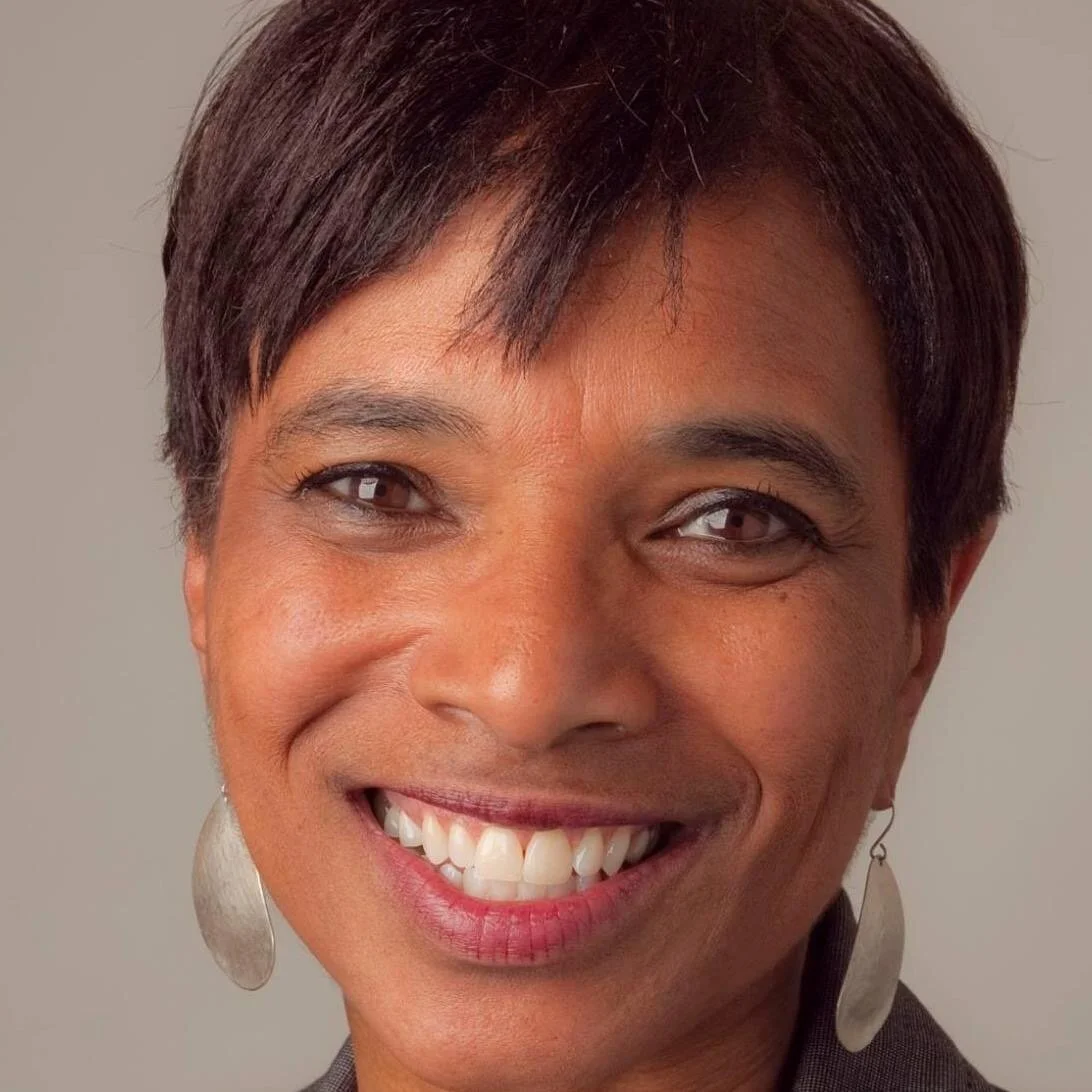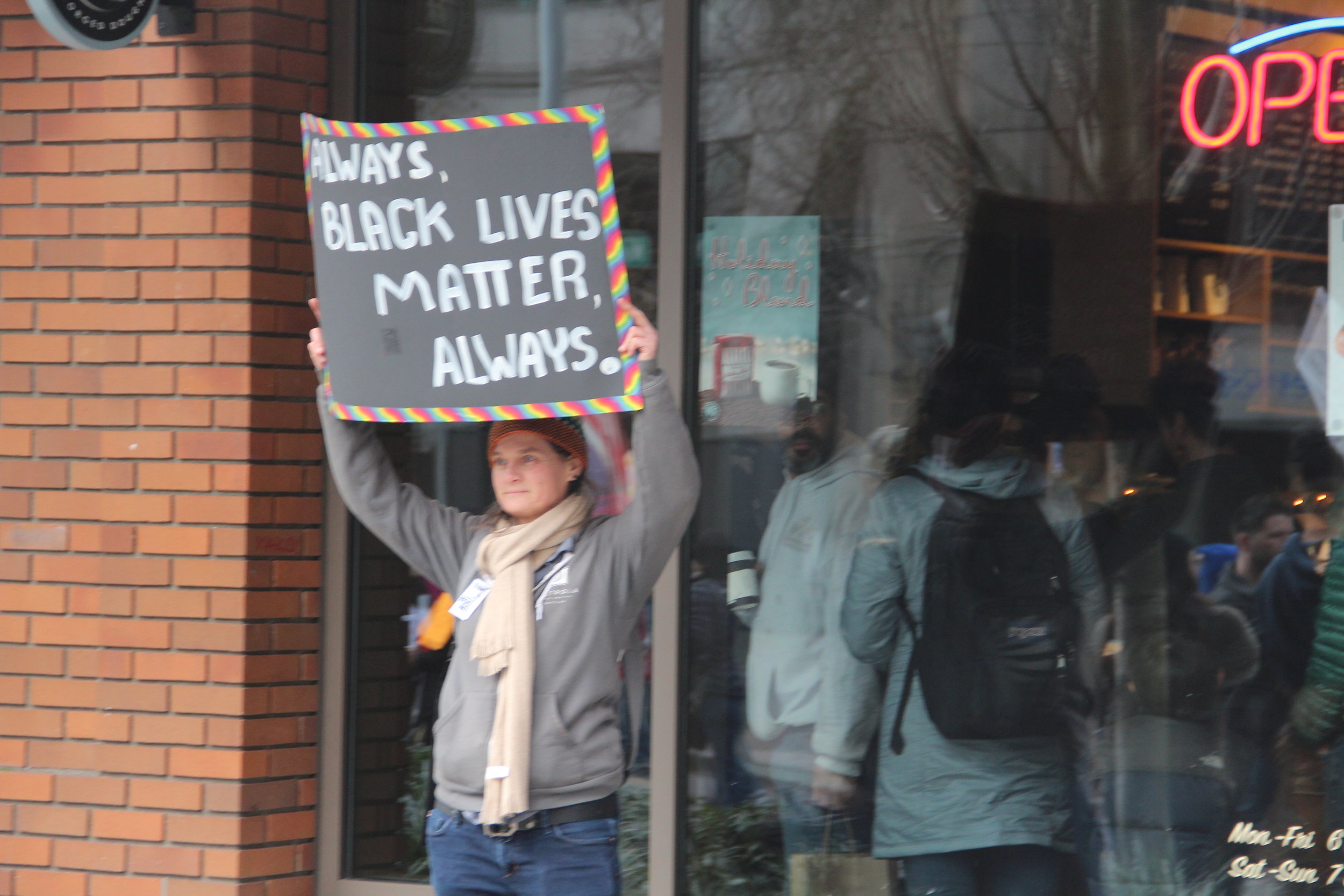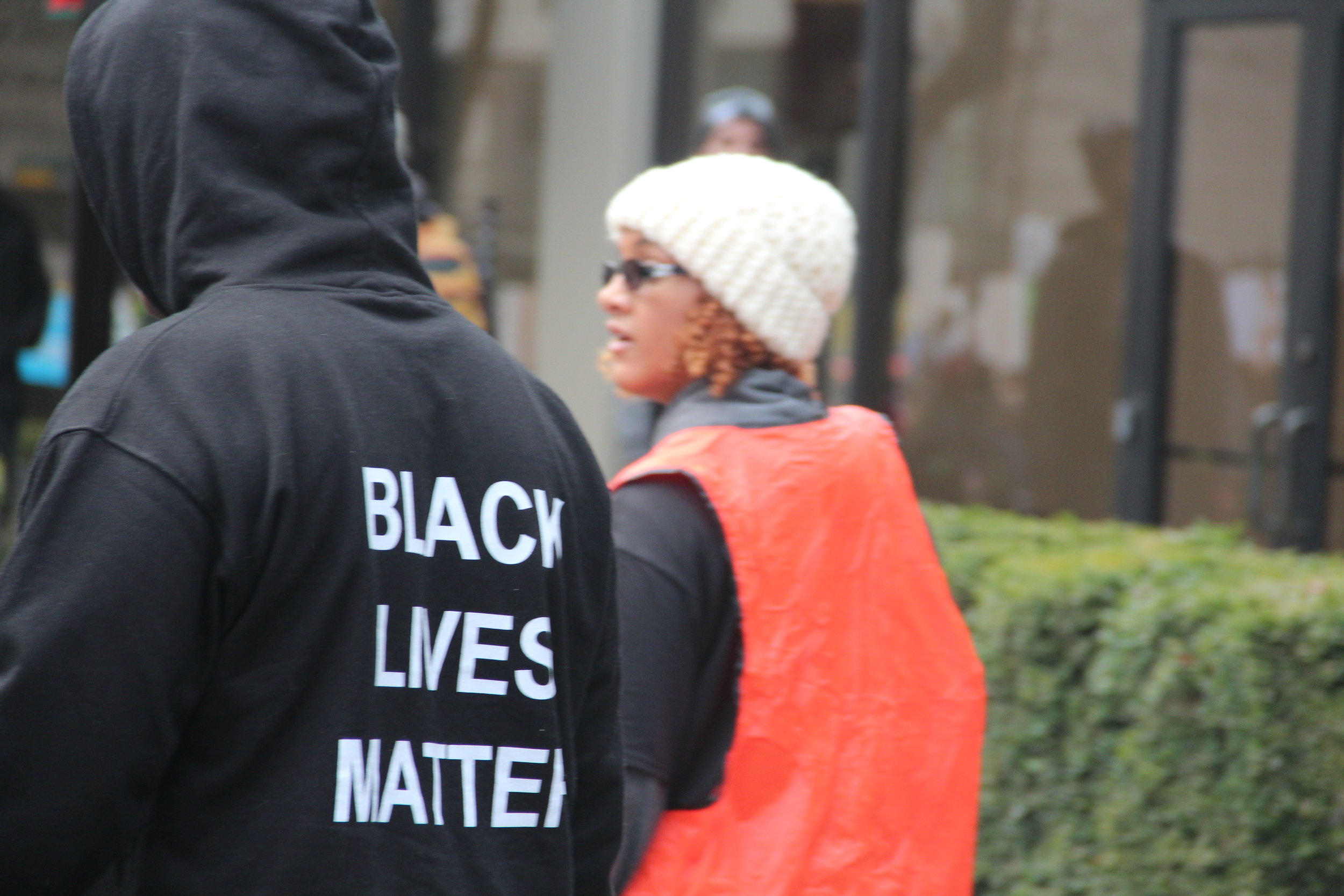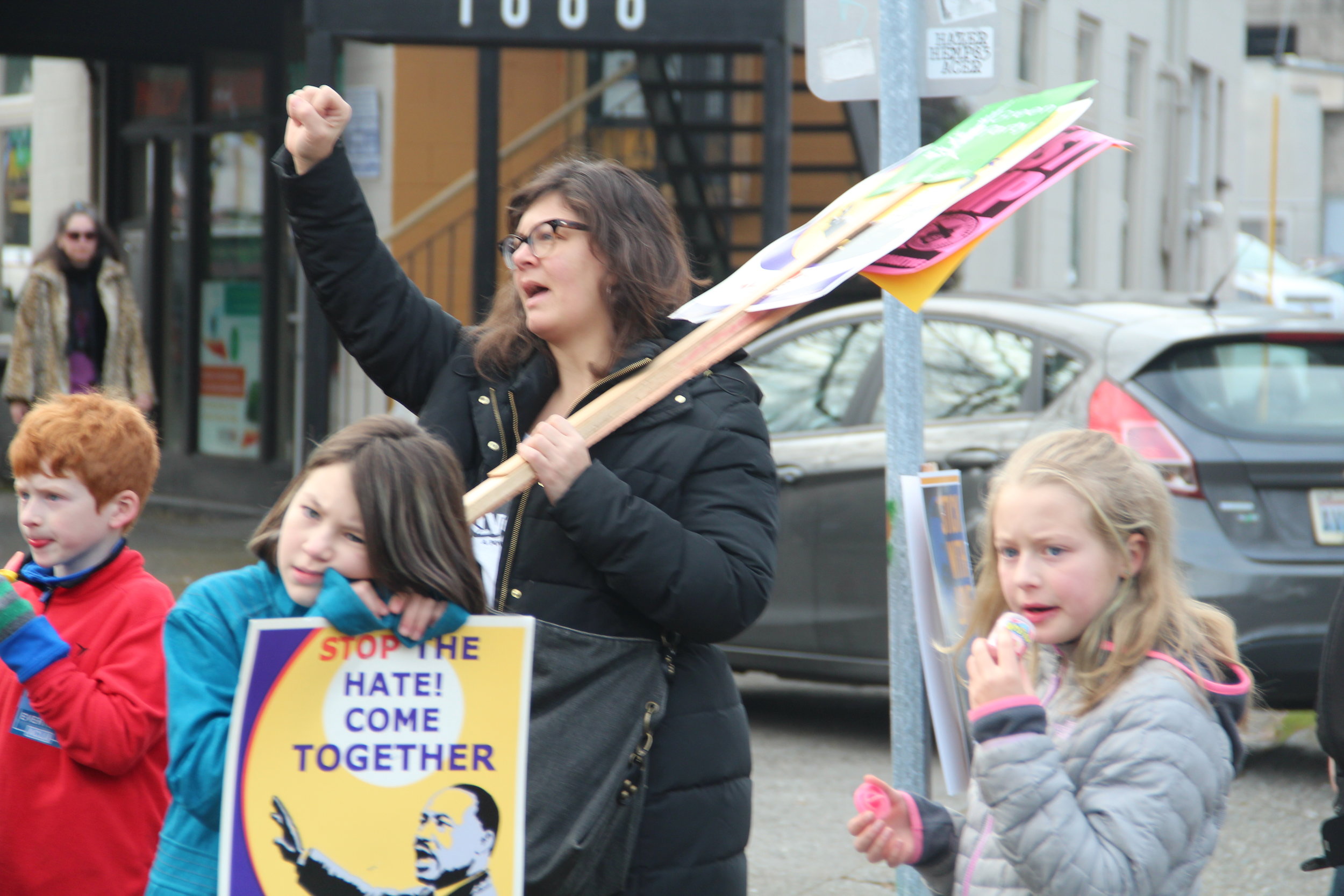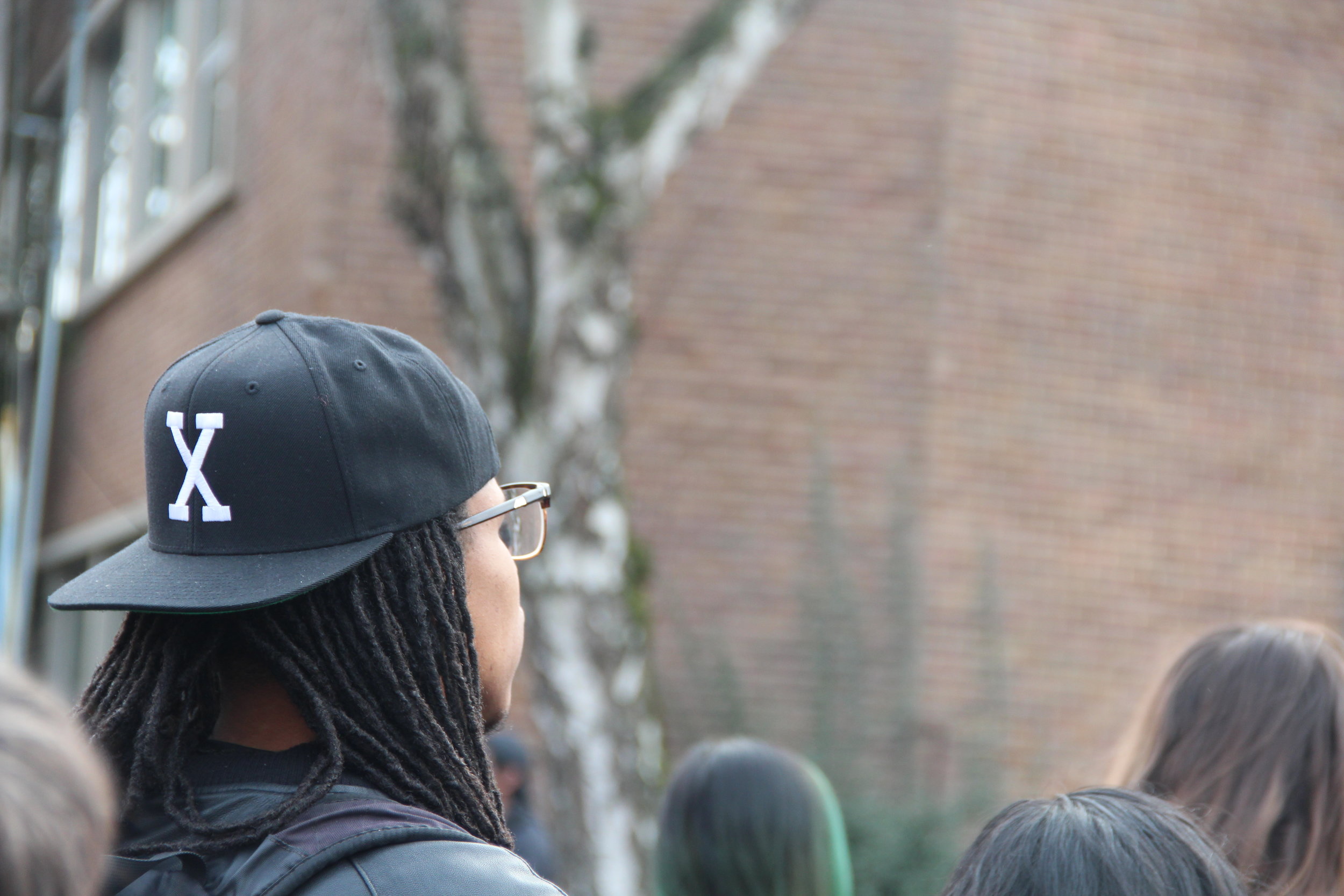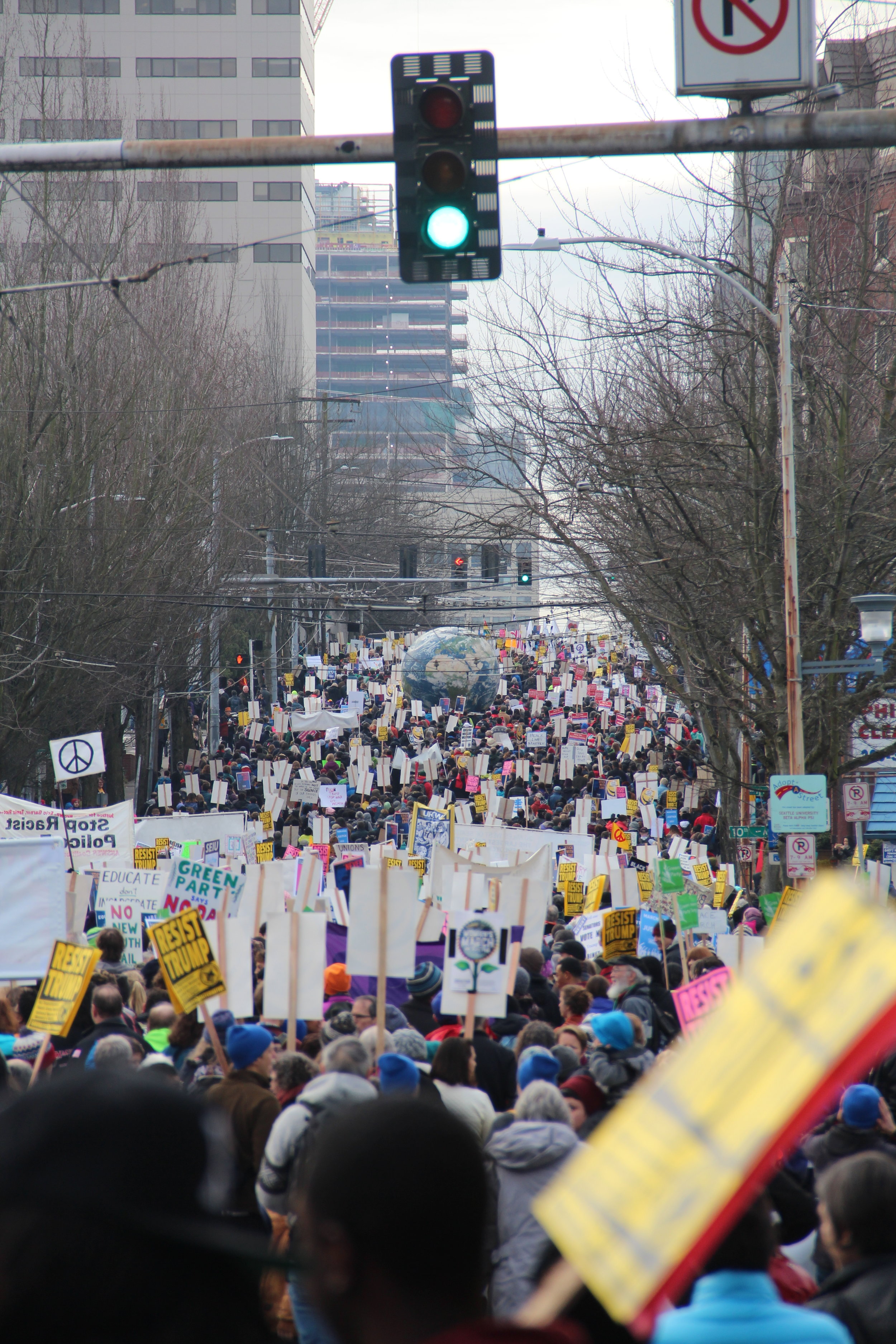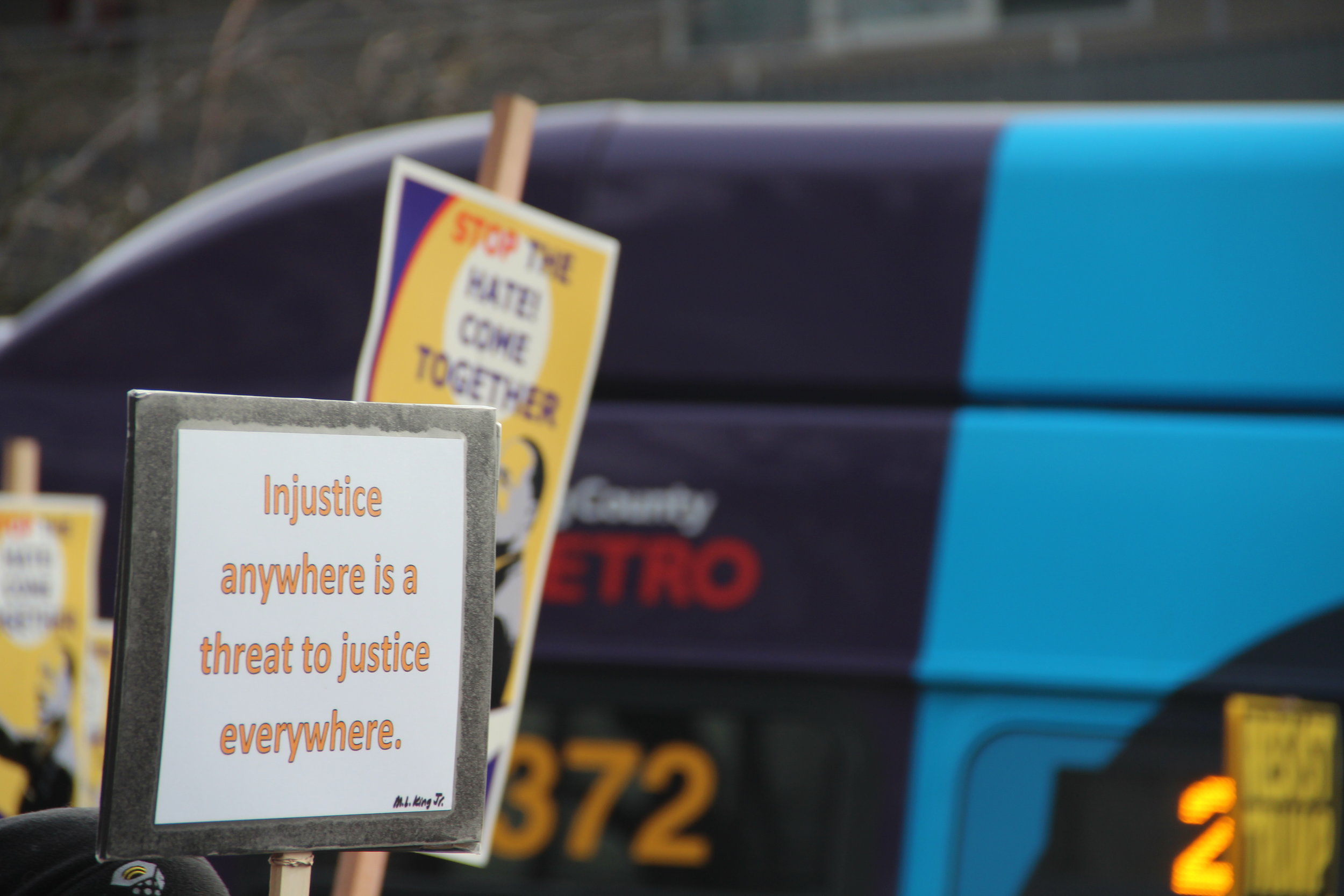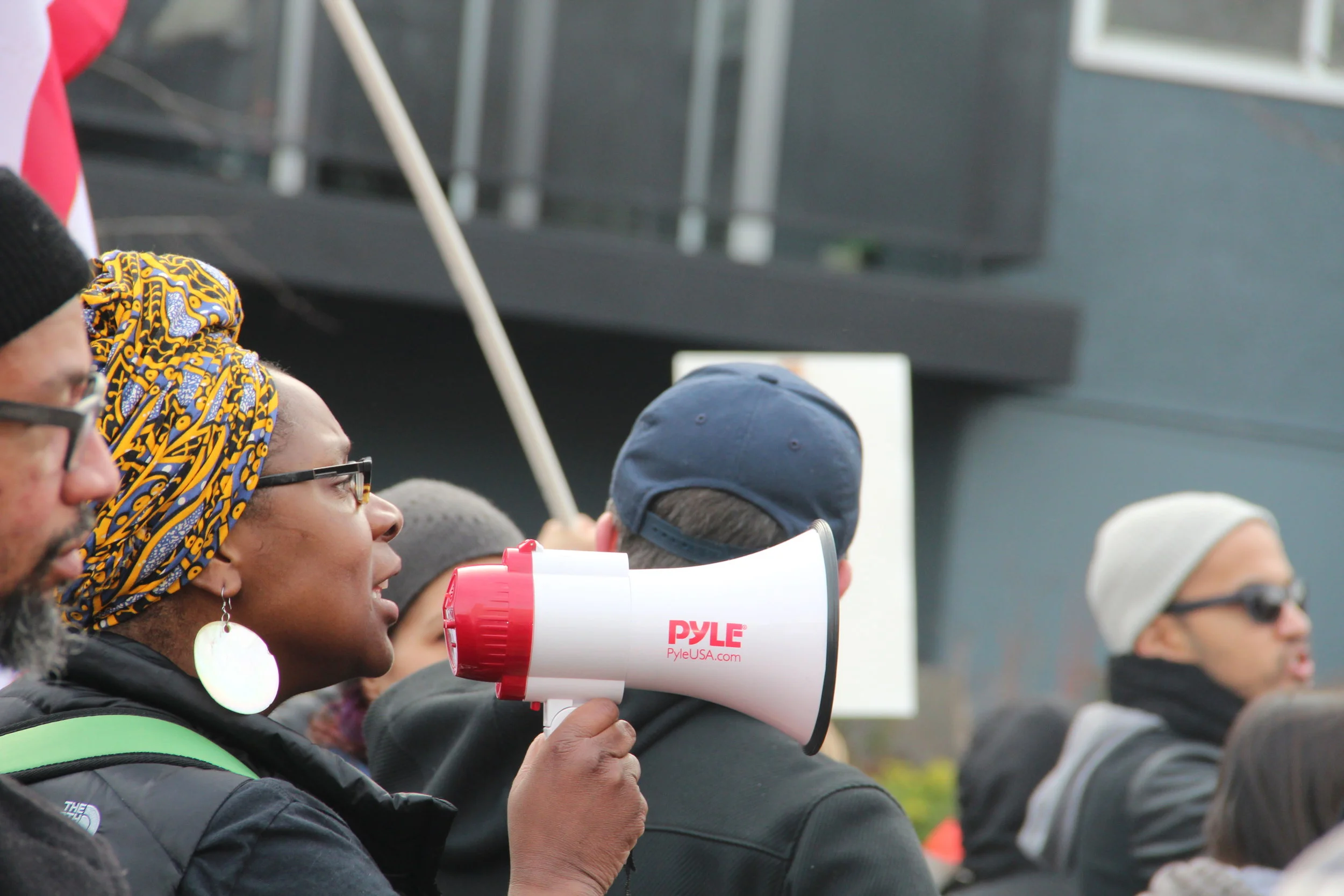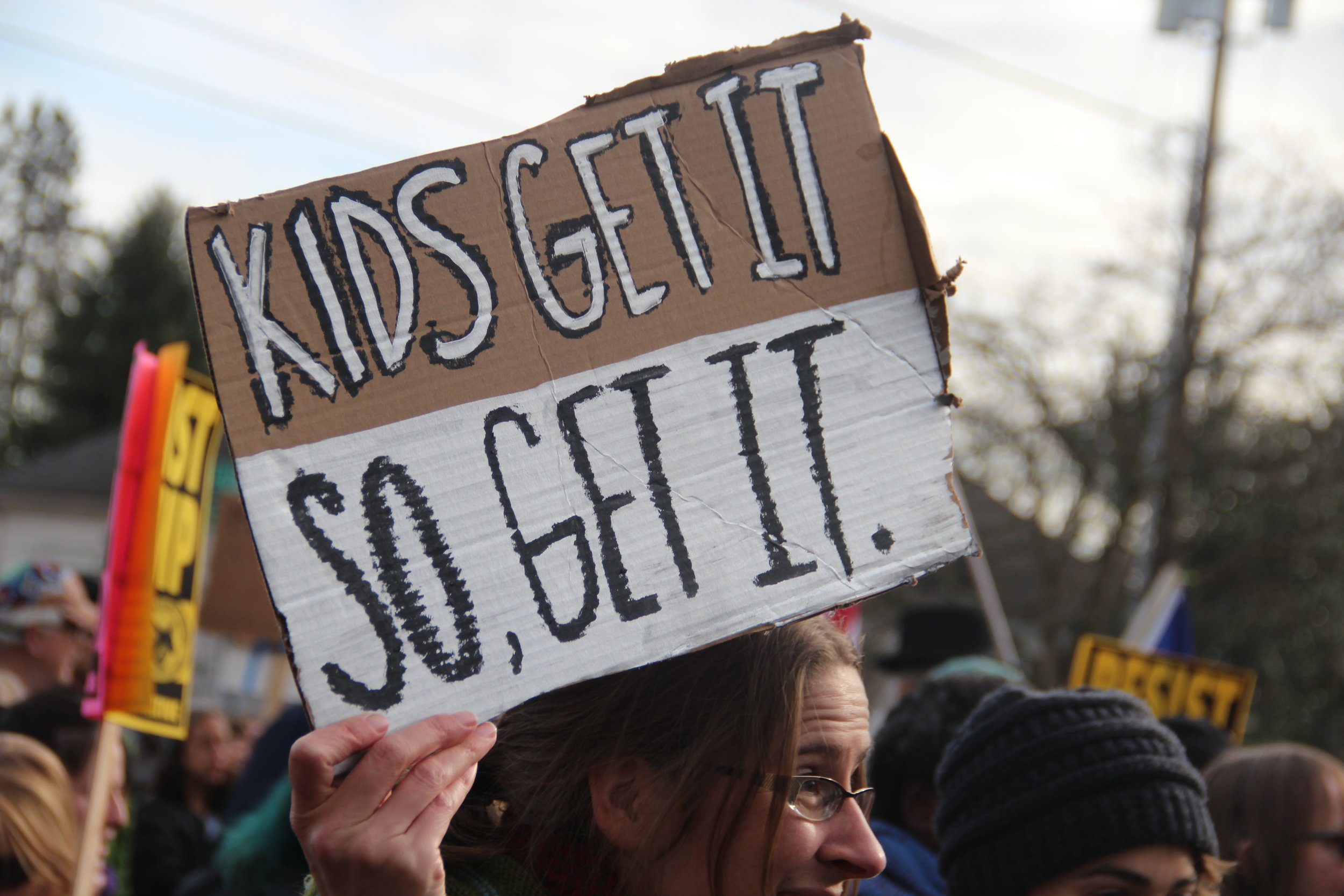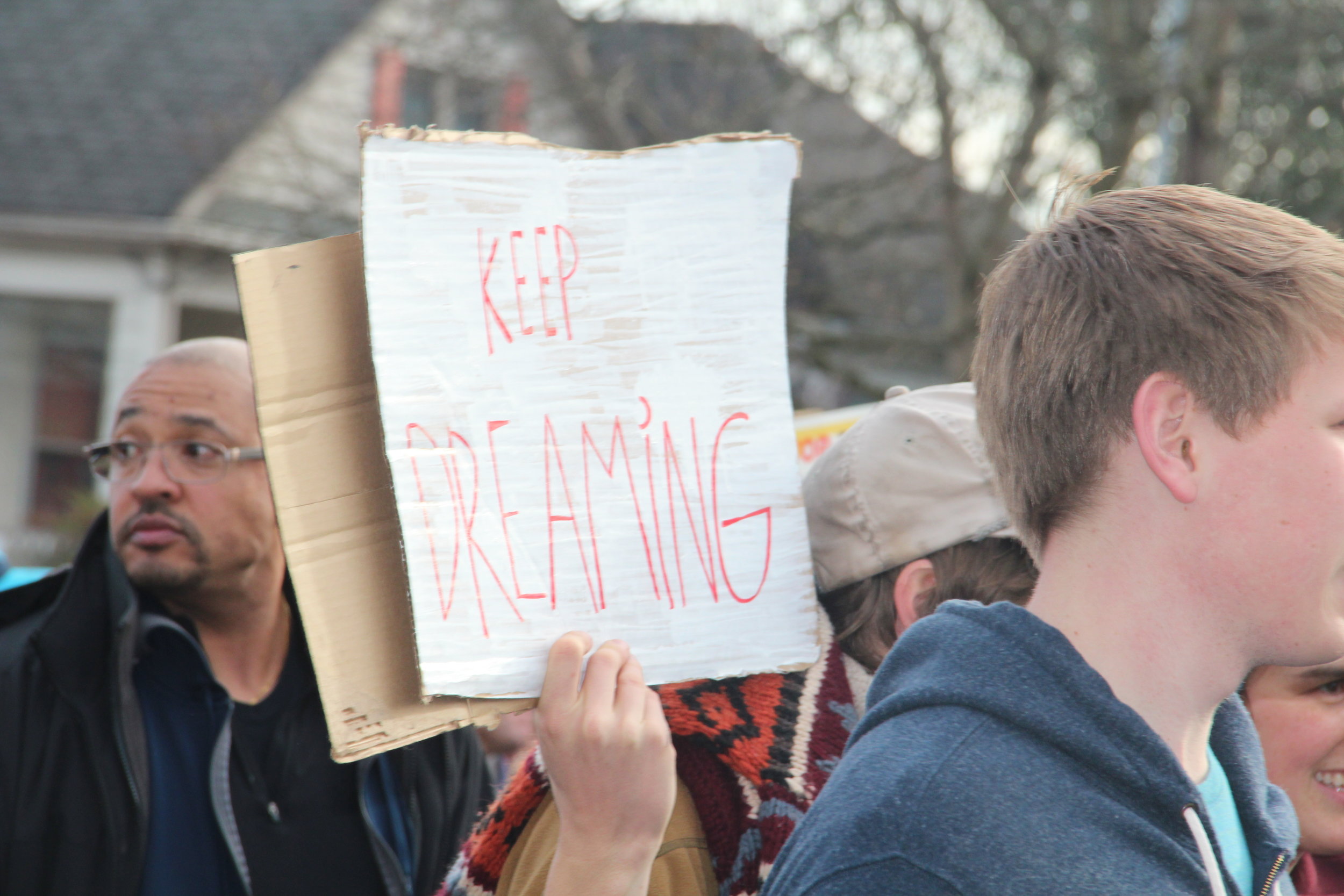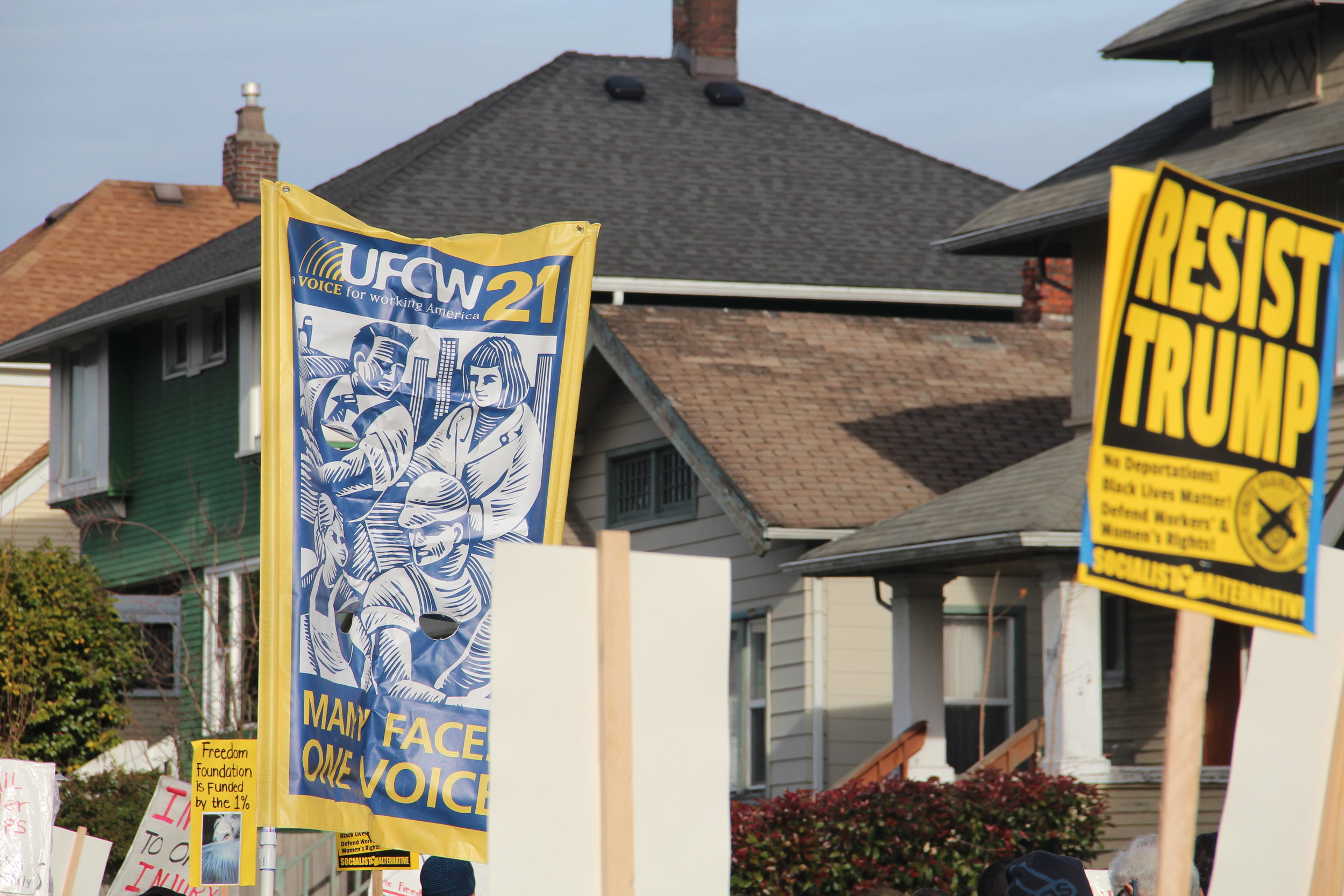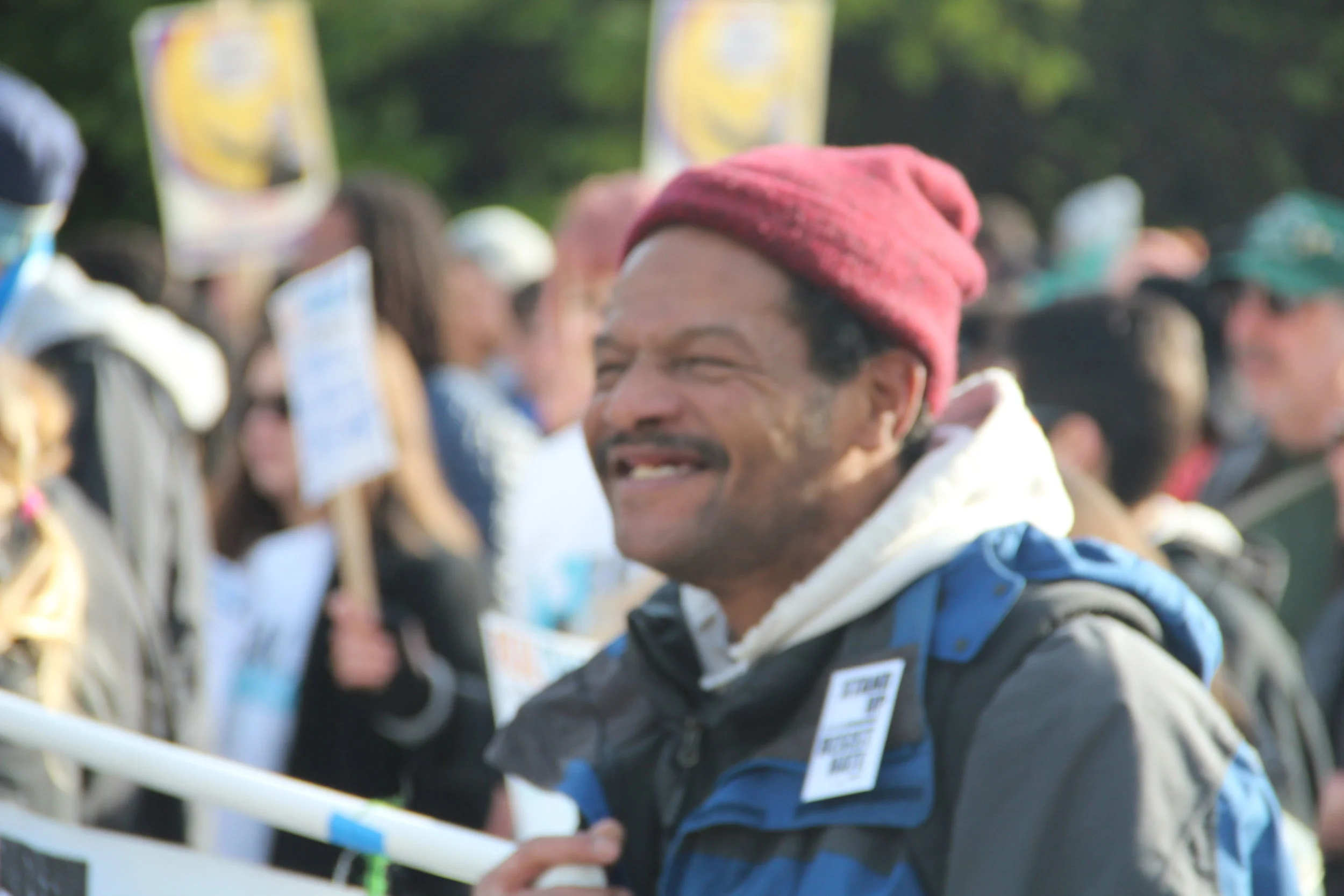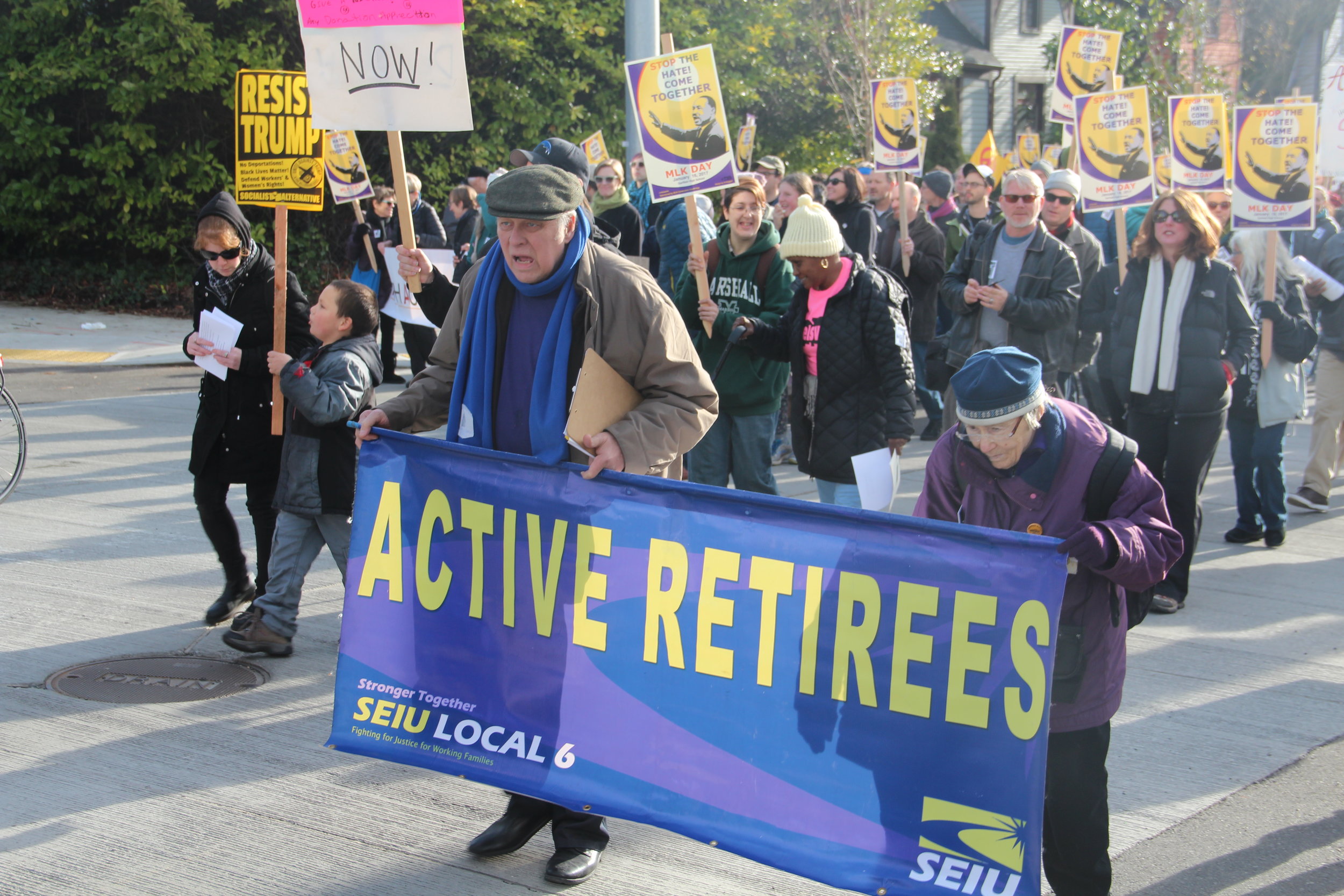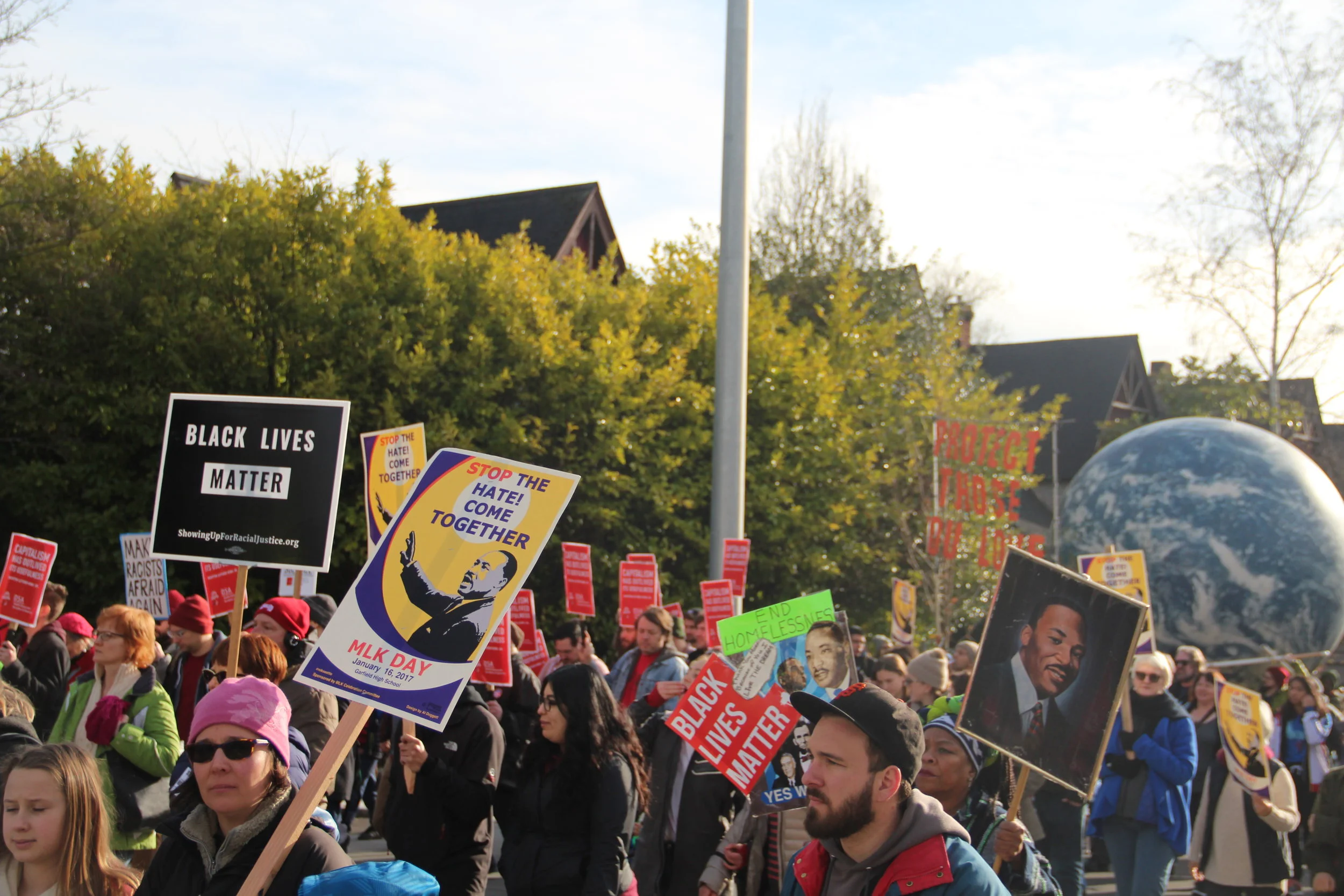Garfield High School is segregated by race. Still. We've known for years and we've done nothing to force change.
Students of color -- especially black students -- are disproportionately disciplined and under-represented in rigorous courses. Still.
And still, their graduation and college acceptance rates lag behind Garfield's white students.
Claudia Rowe wrote an excellent, in-depth piece for the Seattle Times about Garfield this week, painting a sad picture of a school whose hallways, opportunities and outcomes are segregated by race, and of a principal who feels forced to decide between following the rules or doing right by his students:
On paper, Garfield looks like a liberal utopia, a majestic, Federalist-style building in the center of the city with a broad mix of students and long history of academic and athletic success under Principal Ted Howard, a black man. Yet students of different races inhabit separate worlds. The school’s advanced-track classes are mostly white, as is its well-heeled parent fundraising group, and its annual crop of National Merit Scholars.
Meanwhile, on this year’s list of problem kids permanently removed from campus, 21 of 24 are black.
Garfield, in other words, is Seattle: a place of high achievement and deep divides, progressive ideals sitting atop uncomfortable realities.
This isn't the first time the Seattle Times has unearthed this fault line, though. Back in 2004, the Times ran this article about Garfield: "Decades of effort fail to close gap in student achievement."
It talked of "paper integration and a school whose hallways, opportunities and outcomes were divided between black and white:
Perhaps in no other Seattle school have parents and teachers struggled for so long to achieve integration's promise of racial equality -- and been so stymied.
Of course, we already knew about it then, too.
In 2000, The Stranger told us "A Tale of Two Schools: At Garfield High School, the Education You Get Depends on Your Color:"
A former Black Panther, Dixon [a Garfield High security guard] says black kids at Garfield are being neglected and left behind while white kids excel. (I look around and the only white kids I see in the vicinity are a cluster in the hallway, reading Shakespeare to one another.) The Seattle school district, Dixon says, has "built a white, racist program starting with busing. Black kids aren't getting what they need. They're watching the white kids get everything."
Dixon's not the first to point out that Garfield exists as a school within a school. The numbers speak for themselves. On one hand, Garfield boasts the best academic reputation of any high school in the city. It has the most merit scholars in the state and nearly half the Advanced Placement students in the Seattle school district. Yet, there is a second, less-than-world-class school within Garfield. During last year's round of Washington Assessment of Student Learning tests -- which rank students according to skills in reading, writing, math, and listening -- the school fell far below state standards in two categories. Garfield officials claim that many students didn't show up to take the test, accounting for the low scores. But even fancy tests aside, nearly one third of all Garfield students are failing or getting a D in at least one course required for graduation.
To make matters worse, the students who are doing well tend to be white, while the students who are doing poorly tend to be black. The student population at Garfield -- situated in the heart of the Central District -- is estimated by the school district to be 47 percent white, 35 percent black, 13 percent Asian, 4 percent Latino, and 1 percent Native American. Yet, 73 percent of students in the advanced classes at Garfield are white, while 19 percent are Asian and only 4 percent are black (Latinos and Native Americans together make up 4 percent of Advanced Placement classes). On the other end of the scale, 62 percent of all African American students at the school are on the "D and E list" (which is, itself, made up of mostly black students), meaning they are in danger of flunking out.
Excuses for the disparity range from complaints that black students don't want to excel and show up at Garfield unprepared for advanced classes to accusations that the school has set up purposeful barriers to keep black kids at a disadvantage. Ironically, as one of the more diverse inner-city high schools in Seattle, Garfield was once lauded by students as a "model for integration success." These days, it's considered a failure. "The first floor is black people, the second floor is white, and the third floor, I don't know," says junior EunJean Song, who's part white and part Asian. "We see it every day and nobody's doing anything about it."
That's 16 years ago! If we've been collectively aware of this publicly funded racism and systemic oppression for at least 16 years (and I don't imagine it would take much digging to prove we've known about it even longer than that), by now we're collectively complicit. We've given a segregated Garfield High School the blind-eye stamp of public approval.
So, we still know that Garfield is segregated. Meanwhile, its teachers have been more focused on urging students to opt out of standardized tests in the past few years than on teaching, let alone standing up and forcing equitable change.
Garfield is still segregated. Are Garfield's teachers and administrators, its school board representatives and legislators going to do nothing about it?
Are we still going to do nothing but talk about it once every 10 years?


